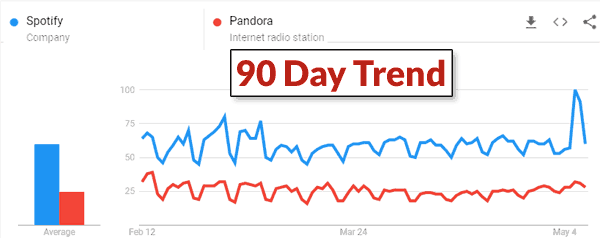The data is in on who the winners and losers are. With this information one can begin to get a feel for the contours of what this update is about.
Preliminary May 2020 Google Update Observations:
1. Thin content powered by external factors losing
2. Local SERPs in Major Flux
3. Aggregators and Directories Winning
4. SERP Features May Be in Flux
Sistrix UK and German Analysis
According to Sistrix, German health related sites are top losers and music related sites are lead the losers in the UK.
Sistrix Top Winners and Losers
Examples of Top Losers
- NYPost.com -36.21%
- Allmusic.com -39.03%
- Last.fm -38.03%
- WordPress.org -33.84%
- Huffpost.com -33.06%
Examples of Top Winners
- News-medical.net 116.27%
- Carbuyer.co.uk 90.09%
- Topgear.com 85.59%
- People.com 75.64%
- Businesswire.com 60.72%
Path Interactive Analysis
Lily Ray from Path Interactive documented 550 winners and losers.
She used the Sistrix US Visibility Index to identify patterns indicating areas in the web seeing the most changes.
Examples of Top Areas of SERP Change
- Nutrition and recipes
- Fitness
- News
- Drugs, alcohol, and rehab
- Science and medical news
- Banking and finance
- Music and entertainment
- Natural medicine
- History
It’s been said that people are streaming less music. So it’s somewhat interesting to see that music related sites and companies like Spotify have experienced a -13.72% drop in visibility, Pandora has lost -2.95% and Last.fm has lost -15.33%.
Is that a reflection of search trends being mirrored in the search results? Google Trends doesn’t really show that.

As you can see in the 90 day trend for Spotify and Pandora, their trend lines have been fairly steady in terms of searches. The same pattern is visible when viewed as a yearly trend as well.
There are more answers seen in other analyses below.
Examples of top losers include:
Fitness Related
- DailyBurn.com -54.94%
- PlanetFitness.com -42.74%
- OrangeTheoryFitness.com -31.31%
Health
- Health-Street.net -15.50%
- NaturalMedicinalHerbs.net -15.38%
Recipes
- Skinnytaste.com -52.92%
- Food.com -5.15%
News
- Mediaite.com -32.83%
- TheFederalist.com -27.01%
- NYPost.com -21.54%
- FoxBusiness.com -20.32%
- RealClearPolitics.com -20.20%
- Snopes.com -19.20%
- Newsweek.com -18.34%
- Msnbc.com -14.37%
- TheAtlantic.com -10.43%
- Politico.com -8.00%
- Health.USNews.com -7.56%
- FoxNews.com -4.58%
- Newsmax.com -3.87%
MarketMuse Data
Content planning and optimization company MarketMuse (MarketMuseCo) has enormous ranking data on search results across millions and millions of keywords. I asked MarketMuse for feedback on what they’re seeing in the search results.
Thin Content
Thin content landing pages that have been able to maintain rankings because of off-page factors and internal link dynamics are having a harder time keeping their positions in competitive SERPs.
In many cases, the pages that the same site owners were using to empower those pages are displacing the landing pages.
Related: WTF Is Thin Content (And How Do You Fix It?)?
SERPs with Multiple Search Intents
In search results where there there are multiple search intents or the Google favored intent in the SERP is not explicit, the cases where weaker landing pages lost ranking positions were quite high.
According to MarketMuse:
“This isn’t a new trend, but it is becoming more and more the phenomenon.”
The takeaway for this ranking issue is to be objective about the pages that lost rankings, particularly if they were being supported by links.
Local Search
Local search results are in a major state of change.
MarketMuse data points to the influence of links in the local search rankings. According to MarketMuse there are two trends:
1. Sites with a high rate of link acquisitions have triumphed in the search results, even if the link acquisition rate seemed unnaturally high.
2. Low quality sites with aggressive high rate of link acquisitions in less competitive areas were also winners.
3. Aggregators and directories in these markets also had wins in the same competitive landscapes.
This is how MarketMuse explains it:
“Our data skews against high lead cost (legal, medical, insurance, financial, high-ticket services) arenas.
But two phenomena we’re analyzing are cases where sites with wildly high link acquisition velocity (unnatural, odd) were rewarded in the updates, especially in the May 7-9 time frame.
In many typically weak competitive landscapes, we’re seeing lower quality sites with high off-page growth have big wins.”
In the legal space, MarketMuse says that big aggregator sites, sites that list and rank legal related sites, are big winners.
According to MarketMuse:
“Check out directories and landing pages for state-wide service providers or the larger regional providers and see if those have grown dramatically. If so, you may be in an area that had higher flux than the normal trends.”
MarketMuse co-founder Jeff Coyle speculated that some of these search results in local search might still change:
“I’d guess that this will be a short term thing and we’ll see rebounds.
For low-quality pages to grow, Google must perceive these entities as being higher value and authority with other measures. When law firms that don’t even serve a region or focus on a particular practice area are now winning a SERP with a landing page/home page, you have to wonder if that that will eventually correct and return to normal.”
I’m not surprised to see volatility in the legal search results. The link situation in that space has traditionally been problematic. That might explain why aggregator sites have risen.
Still, I see this as an opportunity for the legal site that stops chasing what the competitors are doing and creates a strategy that does something different and better. I know it’s not easy, I am speaking from hands-on experience regarding his point.
Related: How People Search: Understanding User Intent
SERP Features
According to MarketMuse, SERP Features may be in high flux. There is more data to review so MarketMuse cautions that their determinations are at this point preliminary. Nevertheless, if you are experiencing volatility in traffic, reviewing for changes in SERP features may be something to look into for answers.
MarketMuse explains:
“We still have more research in process here, but, we’ve seen schema markup and SERP feature changes for months and this update brought some major changes for technology, health, and food sites that we monitor.
One financial site we monitor that was winning SERP features every month with strategic technical approaches saw their first correction with this update.
If you have aggressive schema and are pushing the envelope on getting special placements (even emojis) in the SERPs, you were probably impacted here.”
Jeff Coyle advises:
“If you are reliant on snippets, recipe carousels, or special feature SERP features, find a solution like AHREFs that allows you to do a very quick SERP Feature gap analysis and include that in your research workflow.
If you miss this it will cost you hours of wasted effort trying to understand and attribute where the gains and losses are coming from.”
Preliminary Takeaways
Anytime health sites are impacted, I tend to see that as something that is related to user search intent.
In a similar way, volatility in news site rankings have tended to revolve around issues of credibility and accuracy. There are different ways of conceptualizing the reasons for a loss.
For example, if a news site loses rankings, it might not be because Google sees the site as less credible or accurate. It could be that Google sees other news site as more credible and more accurate.
When trying to identify why a site lost rankings, sometimes it’s less about what’s wrong with the site that lost rankings and more about what’s right about the sites that gained rankings.
Helpful Resource
Aleyda Solis published a helpful Data Studio template that can help you quickly visualize ranking trends using your own Google Search Console data. The flexible filtering properties helps to drill down and identify possible issues related to a Google algorithm update.
Data Studio Template for Update Analysis
Citations
Read the Path Interactive Google Update Analysis
550 Winners and Losers of Google’s May 2020 Core Algorithm Update
Read the Sistrix Analysis
Google Core Update May 2020 – Whirlwind Through The SERPs Despite COVID-19





